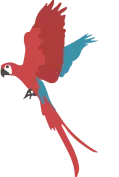Is there a green way to code? Yes! One green coding strategy is to use images that are less than 50kb – one way to get there is what we call that image compression We also have the opportunity to reduce our website’s carbon footprint by compressing images. We will explore how to improve your website’s efficiency, lower its carbon footprint and improve user experience!

Why should we compress website images?
When we talk about images on websites, what we’re really referring to are digital files sent from servers and stored in user’s browsers for display on screens. These files can range up to several megabytes. It’s important to keep file sizes as small as possible because larger files take longer for users’ browsers to download. This creates a poor experience for website visitors and impacts your bounce rate.
But there is another very compelling reason why we should compress images on the web. We are all more aware than ever of climate change and its impact on our planet, which is why green coding strategies like this one play such an important role in lowering the carbon footprint of websites.
Compressing images for web use can reduce file sizes by as much as 70% without compromising quality too drastically—a great way to save bandwidth and energy! It’s also a win-win: users get faster webpage load times and your website will rank higher with search engines thanks to better page speed performance.
Do I need special software to compress website images?
There are many tools available for green coding, but Google has a solution for compressing images that is free and easy to use.
Go to the Image Optimizer page on Google Developers, upload your images and optimise away! The resulting image will be saved as an .webp format, which can also reduce download times thanks to smaller file sizes than other popular formats such as JPEGs.
You could also try additional software options like Photoshop if you need more features, but these alternatives are often expensive and require some training to use.

Should you compress high resolution photography?
The answer depends largely on what you’re trying to accomplish through image use. If it’s critical that photos retain their detail when displayed at larger sizes, then you probably won’t want to reduce their resolution.
However, if your images are meant to be viewed primarily on devices like smartphones and tablets, compressing high-resolution photos will not only make them load more quickly but also free up storage space for other files since the image size is reduced in proportion with screen size.
In conclusion
It’s time to green your website!
Now you know how green coding with image compression can reduce the carbon footprint of websites, improve page load times and save you money. Now it’s up to you to put this green coding strategy into practice for a healthier planet!
Get in touch with us today to optimise your website and help the environment using green coding techniques.

